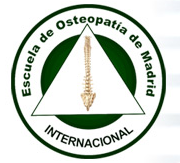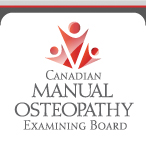Bone Cancer
The term cancer refers to any growth or tumor characterized by abnormal and uncontrolled cell division. However, a lot of confusion was created when, as in the case of bone cancer, the word cancer was all of a sudden misguidedly applied to holes (in the bones), which is in fact the opposite of a tumor growth.
There are many theories about the causes of cancer. Based on my findings of the Five Biological Laws and the Iron Rule of Cancer (1981), cancer always originates from a highly acute conflict shock (DHS) that catches an individual completely off guard. At the moment of the DHS, the conflict shock impacts in a predetermined area in the brain and instantly a “Significant Biological Special Program” (SBS) is activated to assist the organism in coping with the particular conflict situation (Fifth Biological Law). Depending on the type of conflict, the correlating Biological Special Program manifests itself on the organ level either as a cancer or a cancer-equivalent. Furthermore, each SBS has two phases, a conflict-active phase followed by a healing phase, provided the related conflict has been resolved (Second Biological Law).
The biological conflict linked to the bones is a Self-Devaluation Conflict (SDC), an unexpected breach of self-esteem, or loss of self-confidence. Such a self-devaluation conflict can be experienced in many different ways. It is exactly how the self-devaluation is perceived at the moment the conflict occurs, which determines which bones or which part of the skeletal system will be affected.
For example:
 Skull or cervical spine: intellectual SDC in relation to an intellectual task, e.g. at work, at school
Skull or cervical spine: intellectual SDC in relation to an intellectual task, e.g. at work, at school  Hands: dexterity SDC in relation to a manual task or manual performance
Hands: dexterity SDC in relation to a manual task or manual performance Thoracic spine: a SDC that “hits” the person as a whole
Thoracic spine: a SDC that “hits” the person as a whole Hip: the SDC is experienced as "This is too much to carry", "I can't manage", "I can't make it"
Hip: the SDC is experienced as "This is too much to carry", "I can't manage", "I can't make it" Legs, knee: SDC in relation to a physical performance, e.g. in sport
Legs, knee: SDC in relation to a physical performance, e.g. in sport
During the conflict-active phase we see a loss of bone tissue (“holes in the bones”), also called bone osteolyses, with a simultaneous depression of the production of white and red blood cells. In moderate cases of a SDC, the tissue loss does not involve the bones but the lymph node(s) nearest to the related bone.
In the healing phase, following the resolution of the Self-Devaluation Conflict, the exact opposite process takes place. In order to refill and re-calcify the holes and gapes in the bone, callus and bone cells quickly proliferate. This natural bone repair process is always accompanied with swelling. Because of the swelling, the periosteum (the skin that tightly covers the bone) stretches and lifts, resulting in an increased risk of bone fracture during that time. It should be mentioned that if the self-devaluation conflict(s) last over a long period of time, the bone loss can cause a spontaneous fracture even in the conflict-active phase.
The stretching of the periosteum can be very painful. The better a patient is prepared for these predictable “bone healing pains" (approx. 6-8 weeks; up to 3 months in severe cases, if there is no conflict relapse) the better he/she will be able to endure the temporary(!) discomfort. Usually, the pains become unbearable when the patient panics! It is important to understand that pain is a vital part of the healing process because it forces the individual to rest, which decreases the risk of fracturing the bone. If the spine is involved, it is strongly advised that the patient stay in bed in order not to put stress on the spine and possibly break a vertebra.
Parallel to the swelling on the body level, there is also a swelling in the corresponding brain area, precisely, in the cerebral medulla from where this particular “Significant Biological Special Program” (SBS) is controlled and directed. The swelling in the brain (so-called brain edema) is visible on a brain CT as deep dark. With the ongoing regeneration of the bone(s), the brain edema also recedes.
The healing and re-calcification process can be easily monitored with the help of bone X-rays. Histologists interpret the distinct white spots on a bone X-ray as “osteoblastic metastases”, although it is well known that osteoblasts, which are bone building cells, are vital in the healing of bones. To diagnose these holes in the bones as “osteoclastic (bone absorbing) metastasis” is even more absurd, because: How can “malignant cancer cells” possibly spread from holes in the bone, where cancer cells cannot even be found? How can a "benign” bone osteolysis (gaps in the bone) turn into a “malignant" osteosarcoma?
OSTEOSARCOMA
A so-called “osteosarcoma” often occurs when the periosteum is opened, for example, during a biopsy. Caused by the exploratory excision the liquid callus (produced in the bone during the healing phase in order to refill the bone tissue) finds its way into the surrounding tissue resulting in an “osteosarcoma”, which is in actual fact a solidified accumulation of callus.
With the understanding of German New Medicine exploratory excisions become entirely unnecessary. Our experience shows that brain CT scans provide much more reliable information about histological formations than any biopsy.
ACUTE JOINT RHEUMATISM - ARTHRITIS
Acute joint rheumatism, for example in the knee, indicates the healing phase of a “physical performance”-SDC (triggered, for example, by the distress of having failed in sport, of feeling “worthless” because of difficulties walking, etc.). The pain and swelling recede together with the completion of the repair process. However, the painful swelling, which is really only temporary, can cause a new self-devaluation conflict, particularly if the patient feels incapacitated, that is to say “useless”. In order not to get caught up in this vicious circle, it is of utmost importance to recognize that a meaningful healing process is running its course and that it is the “disability” which causes the “chronic” healing process. Changing the attitude towards the pain is an imperative step towards completing the healing process.
Polyarthritis often shows the following pattern: a person suffers, for example, a self-devaluation conflict in relation to the fingers or the hands brought about by the feeling or blame of having failed at a manual task. With the resolution of the conflict, the periosteum of the finger joints stretches, causing acute pain. Because of the painful swelling the patient feels even more inept, resulting in a new self-devaluation conflict during the period when the original “finger/hand”-SDC is already in healing. With the new conflict activity the swelling goes down – but not because the joint has completed the healing process but because of a reactivated bone tissue loss with osteolyses in the affected joint(s). In other words, the healing process has been reversed. When the painful swelling recedes, the patient feels once again competent using the hands, which puts him/her right into the healing phase with re-activated painful swelling of the finger joint(s). This process of going back and forth between conflict activity and healing can last for years. Eventually the finger joints deform as a result of constantly re-experiencing new self-devaluation conflicts.
These days, patients, who have previously been diagnosed with acute joint rheumatism, e.g. of the knee, often end up in oncology wards and are treated for osteosarcoma, resulting in an extremely high mortality rate.
The difference between bone fractures (without a DHS) and bone osteolyses caused by self-devaluation conflicts is that with fractures the callus formation takes place without much of an edema. In either case, after the completion of the healing process the bone is much stronger than before. This is exactly the biological purpose of this particular “Significant Biological Special Program” of Nature.
Once a patient receives the diagnosis of a “malignant” cancer, doctors are allowed to administer morphine even if the pain is minor. Nonchalantly, the dreadful side effects of morphine, such as addiction, suppression of breathing, or intestinal paralysis are simply ignored. Since the tolerability of pain is very subjective, patients usually experience the pain much more intensely when the effect of the morphine diminishes. This is why the morphine dosage has to be constantly increased. Morphine is always a one-way street – a slow death.
With German New Medicine we are able to identify exactly, in which phase of a “disease” the pain occurs and how long the pain might last. We can’t emphasize often enough that is of greatest importance for the patient to recognize that bone pains are a good sign indicating that a healing process is under way.
Cytostatic agents or “Chemotherapy” brutally interrupt the natural healing phase. With cerebrum-controlled cancers, e.g. ovarian cancer, testicular cancer, cervical cancer, lymphoma, bone cancer, etc., cytostatic drugs fake positive results by blocking the cell proliferation (natural tumor growth) as part of the healing and repair process. Well, Chemo really does reduce swellings – be it the swelling of a boil, of an abscess, or even the swelling caused by a bee sting; however, Chemo not only interrupts healing, it also prevents the microbes from doing their beneficial work during the healing process.
With the Ontogenetic System of Microbes (Fourth Biological Law) we learn to understand from an evolutionary point of view how perfectly the roles of microbes fit into Nature’s Biological Special Programs (SBS). Microbes developed, essentially, with and for us. They are an integral part of Nature’s regulatory system, which conventional medicine hasn’t yet recognized. Ignorantly, the emphasis has been to kill and eliminate them with antibiotics or sulfonamides.
Bacteria either decompose tumors that are cerebellum-controlled or they reconstruct cerebral-medulla controlled tissue, such as bone tissue. Surgeons have used this knowledge for more than 50 years insofar as they routinely open a complex fracture through perforation with surgical nails. By keeping the fracture open, bacteria can easily access the area and participate in the healing of the bone. In addition, bacteria not only facilitate the reconstruction of bone tissue, they also break down superfluous bone splinters.
A person can never die from the activity of microbes or a so-called “infection”, but certainly from a large brain edema that develops simultaneously during the healing phase (pcl-A), particularly if the conflict activity was intense and lasted very long.
ANEMIA - LEUKEMIA
One more aspect needs to be mentioned: a self-devaluation conflict involving the bones with bone tissue loss during the conflict-active phase also involves the bone marrow, resulting in a depression of the production of blood cells during the conflict active phase. An intense SDC that lasts over a long period of time can therefore cause acute anemia or so-called panmyelophtisis. During the vagotonic phase the blood vessels expand and the extra volume is filled with blood serum. The result: the blood cell count appears low (“pseudo-anemia”), but is in fact the same as during the conflict active phase.
However, with the beginning of the healing phase, the bone marrow immediately starts to produce new blood cells. First, it produces excessive amounts of “immature” leucocytes, so-called leucoblasts, which participate in the repair process of the bone! It is this particular stage of the healing phase of a bone related self-devaluation conflict that is commonly called leukemia.
Leukemia is kind of a proliferation of sarcoma-like blood cells with the difference that within a few days these blood cells are broken down in the liver and quickly excreted.
The distinction between acute and chronic leukemia can only be understood by taking into account the specific conflict situation. Acute leukemia is usually caused by an acute and highly dramatic self-devaluation conflict, while chronic leukemia results from constant relapses of self-devaluation conflicts of a lesser degree.
Leukemia is always preceded by bone cancer! It is the shattering diagnosis of “leukemia” that often throws the patient who is already in the healing phase into new conflict situations, resulting in new cancers, which are then erroneously interpreted as “metastasis”.
During the leukemic healing phase, a patient is like a tender plant that should not yet be exposed to the rough climate of a “self-worth competition”.
Bone cancer, anemia, leukemia, osteolysis, sarcoma, bone pains, lumbago, scoliosis, a herniated disk, joint rheumatism, plasmozytoma, arthosis, Morbus Bechterew (spondylitis), polyarthritis, etc., are all manifestations of different degrees of self-devaluation conflicts in one of the two phases of a bone-SBS (Significant Biological Special Program).
© Dr. med. Mag. theol. Ryke Geerd Hamer
German New Medicine
Go to Content










 Master PCMH Criteria with Upcoming Webinars
Master PCMH Criteria with Upcoming Webinars







 The American Osteopathic Association (AOA) is the representative organization for the over 70,000 osteopathic physicians (DOs) and 18,000 osteopathic medical students in the United States. The organization promotes public health, encourages scientific research, serves as the primary certifying body...
The American Osteopathic Association (AOA) is the representative organization for the over 70,000 osteopathic physicians (DOs) and 18,000 osteopathic medical students in the United States. The organization promotes public health, encourages scientific research, serves as the primary certifying body...










 9:40
9:40
 Daniel Enriquez de Guevara
Daniel Enriquez de Guevara













.jpg)


















0 comentarios:
Publicar un comentario